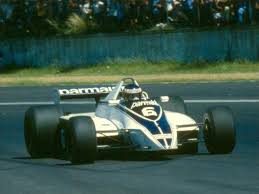I'm no aerodynamicist but I remember well my hidrodynamics course. For those in my position, here is a (repeated but
more confusing

) explanation of kilcoo316 argument.
As usual, by showing my limitations, I'm sure kilcoo will teach me one thing or two.
The general idea of Kutta is that given the equations of flow, you can have multiple solutions. For example, given the equations to a wing, here you have two possible solutions:

Clearly the solution on the left is the correct one, isn't it?
So, what Mr. Kutta said is: at the trailing edge, given those two solutions, you could have these two different flows:

You can see that the flow around the trailing edge, in the second, lower image, turns around the trailing edge sharply: the speed of flow must be infinite there for the air to turn around "instantly".
Thus, to "forbid" that kind of (mathematically valid but physically impossible) solutions, he said:
In a physical flow (i.e. having viscous effects), the flow will smoothly leave a
sharp trailing edge. -Kutta Condition-
Thus, the left flow in the first image is the correct one. My teacher used to call this "boundary conditions". They are restrictions you don't find in the equations, but in the logic of the real world.
We, alumni, used to call it the Law of the Machete (you know, the tropical sword or knife used in the jungle): if equations don't fit, then you "cut" through them.

It's a very useful law in engineering!
Kutta has a corollary: you cannot have two different vectors of velocity, like this:

Thus, Vupper and Vlower must be one, they cannot be two different vectors: the air moves in a flow that is (in that image) horizontal, like this:

--End of Kutta condition explanation--
Now, if I understand Kilcoo argument (which I doubt) what he says is that
in the leading edge of the sidepod you cannot have air from the nose "crossing" toward the tunnel.
In the last image, "reverse" the speed vectors, so they point to the left. Ready?
Now, T.E. is not the trailing edge: it's the leading edge of the sidepod, seen from above the car. Vupper is the air coming from the nose. Vlower is the air coming from the wheels. So, they cannot be different vectors, they must be one.
I'm not sure at all if what kilcoo means is that air coming "from the wheels" is kind of a barrier that doesn't allow the air coming "from the nose" to enter the tunnel.
I know I got something wrong, but if I don't explain it, I'll never be corrected.
By the way, welcome, speedsense and Riderate. I found your explanations fascinating. Please, keep the posting. I believe you more than I believe kilcoo! (sorry, pal, but they seem to have hands on experience: the "Law of the Machete" applies!

).









